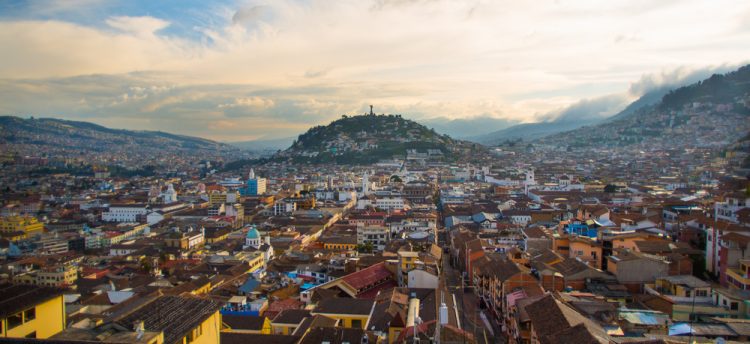There are two reasons why cable car rides are utterly irresistible.
Firstly, the engineering that enables a length of wire to haul a small metal cabin up steep mountains and across gaping valleys is intriguing. But more importantly, there’s the gorgeous view from the top, with a city or countryside sprawled out far below.
So when I had some free time in Quito, the capital of Ecuador, it was obvious how I’d spend it. Quito’s TelefériQo excels in both criteria. Mechanically speaking, it’s one of the steepest cables I’ve ever seen, climbing Pinchincha volcano in a near-vertical finale. The view from the top of this slightly active volcano is magnificent. The city stretches out in the valley of Pinchincha, then rambles over several other hills and surrounding valleys. It’s shaped like a giant banana, stretching approximately 50 miles in length, but less than five miles wide. A path along the summit of the volcano offers a 360-degree view, with the glacier-capped Cotopaxi volcano as one of the highlights.
Some enterprising men have set up a horse-riding business at the top, charging $5 for a 30-minute ride. Or you can pose with a couple of llamas for an additional fee, but my favourite option was a giant swing, offering a panoramic view of the city as you swing lightheaded from the exhilaration and high altitude.
Quito is even more spectacular from the ground than it is from above. The entire historic center was declared a UNESCO World Heritage site in 1978, protecting hundreds of buildings dating back to the Spanish conquistadors. The enormous San Francisco Plaza is surrounded by architectural gems, including the dazzling white San Francisco monastery. That’s now a tourist attraction, featuring ornate towers, a museum, 13 serene cloisters, three churches, and a garden café. When I entered the main church, I emerged on a balcony, and was surprised to see a priest sitting at the organ and singing to the congregation below. I ducked out again and followed the spiral stairs up a tower, emerging on the roof and looking out over old colonial buildings and terracotta rooftops clinging to the foothills of the Andes.
To get a better feel for Quito, I joined a free walking tour with Community Adventures. Our guide, Ivan Pilatuña, showed us some highlights and oddities, entertained us with anecdotes, and took us to fascinating places, such as a workshop dedicated to repairing religious artifacts. The churches here are ludicrously ornate, dripping with gold leaf and thousands of ancient works of art, so keeping them in good nick is a serious undertaking.
Soon I felt a breeze fan my face, and I heard a buzzing sound like a miniature helicopter. An iridescent green hummingbird alighted on my fingers and dipped its long bill into the cap. I was spellbound by the tiny little thing – so pretty, so delicate, weighing almost nothing, and gripping my fingers with its tiny claws. In a blur and a breeze, it was gone, but another bird came, then two buzzed around, fanning my face as they jostled for position. I grinned with delight and felt humbled to be this close to nature.
While that experience fed my soul, the Quitsato Equator Monument stretched my brain. The country gets its name from the Equator that runs through it, and various museums celebrate that fact. At Quitsato, a metal dividing line runs across a large plaza surrounding a 10m tall sundial, while maps and rotating models provide the scientific facts. I felt frustratingly dense as the guide tried to make science and astronomy comprehensible, explaining how the planet moves and why flat maps get the Earth so wrong. When he mentioned an official information pack complete with a little blow-up globe, I instantly invested $40 to educate myself about my planet.
Ecuador educates your tastebuds too, with a huge variety of fruit, interesting vegetables, including I-forget-how-many different varieties of potatoes, and plenty of fish, meat, and chicken, often served with tasty spices and flavours to liven everything up.
One lunchtime, we ate in a garden where the owner grows fruit and vegetables and uses some of them to prepare traditional medicines. After several delicious dishes, she carried out a large platter of fried cuy – guinea pig. Ecuador is one of the few places where people eat an animal that’s a family pet in other countries, and it’s considered a delicacy. Most of us dug in curiously, but I chose badly with a piece that was all bone and batter, so I couldn’t tell you if it tastes like chicken.
Ecuador is also liberally sprinkled with 84 volcanoes, picturesque lagoons formed from melted glaciers, cloud forests, and pretty little towns. For many people, Quito and Ecuador as a whole are just jumping off points for a trip to the world-famous Galapagos Islands, but it’s so well worth a holiday on its own.

